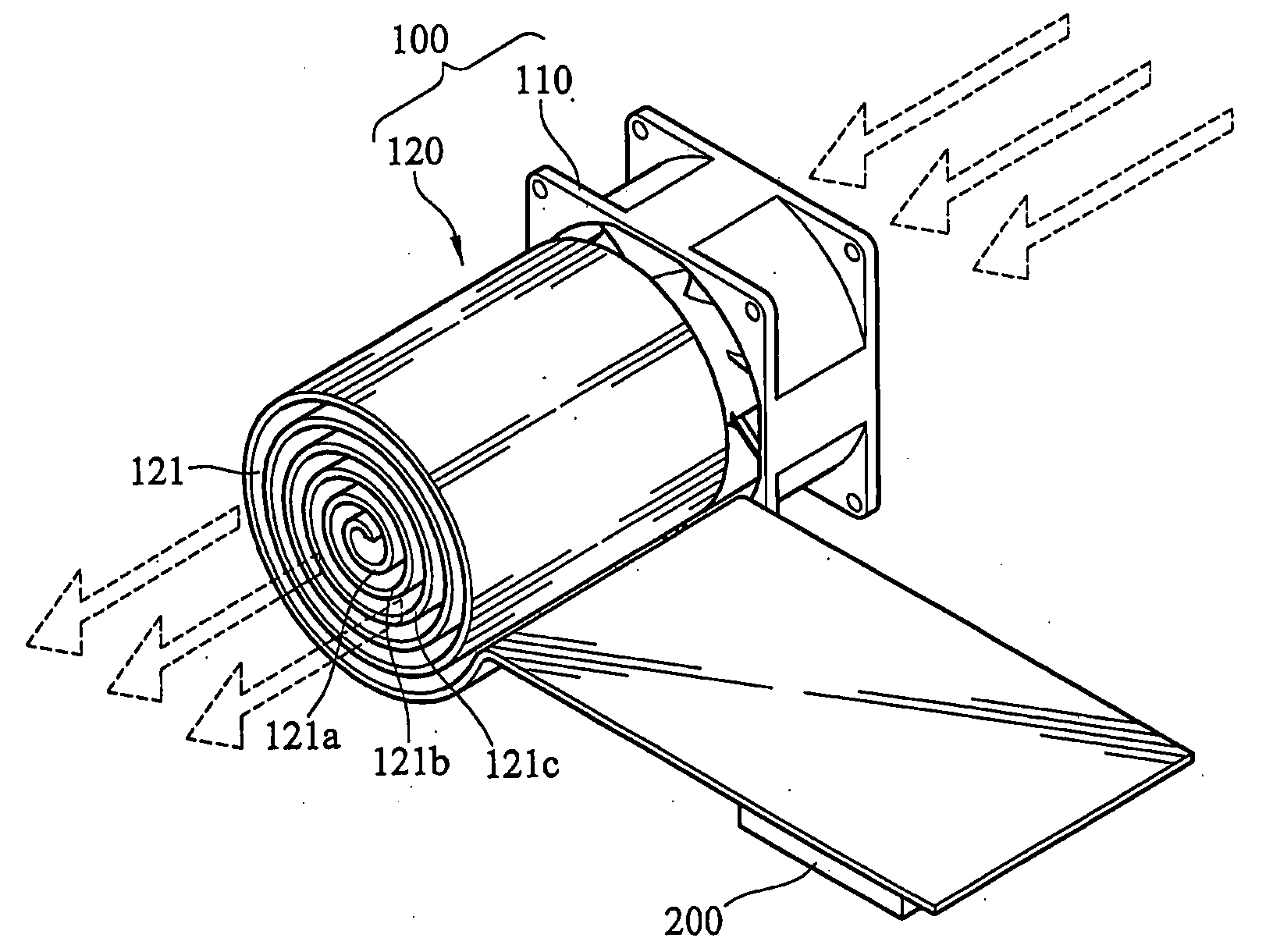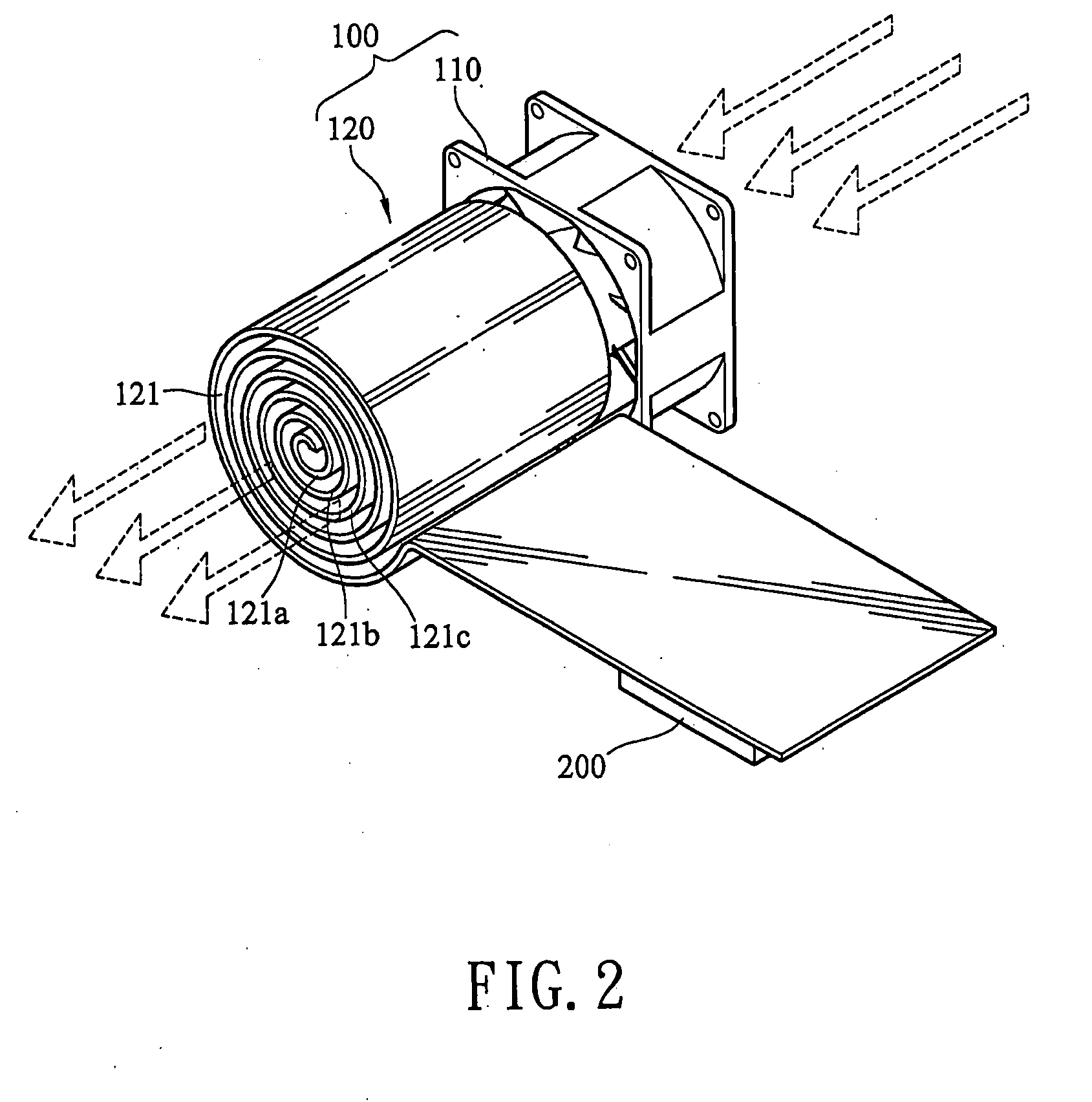Heatsink apparatus
- Summary
- Abstract
- Description
- Claims
- Application Information
AI Technical Summary
Benefits of technology
Problems solved by technology
Method used
Image
Examples
first embodiment
[0024]FIG. 2 is a schematic isometric view of the present invention. As shown in the figure, the heatsink apparatus 100 of the present invention is used to dissipate the heat generated by the electronic component 200 in the electronic apparatus, and the electronic component 200, such as a chip and a processor, generates high heat energy during operating. The heatsink apparatus 100 disclosed by the present invention includes a fan 110 and a heatsink fin 120. The fan 110 is used to generate a convection air flow and dissipate the heat by forced convection. One end of the heatsink fin 120 is adhered to a surface of the electronic component 200, and the other end is bended to form a curl portion 121. Therefore, the heat generated by the electronic component 200 is conducted to the curl portion 121 of the other end via one end adhered to the heatsink fin 120. The position where the curl portion 121 is installed corresponds to the vent of the fan 110. The convection air flow blown by the ...
second embodiment
[0026]FIG. 3 is a schematic isometric view of the present invention. The fan 110 disclosed by the present invention may be a side flow fan, and the vent is disposed at the side position. The air flow firstly passes through blades of the fan, and then is blown out through the vent perpendicular to the blade. The curl portion 121 is disposed with its winding axial direction parallel to the side vent of the side flow fan 110, such that the curl inner surfaces 121a, 121b, and 121c in the curl portion 121 can completely receive the air flow generated by the fan 110. The air flow passes through the hollow portion of the curl portion 121, and contacts with the heatsink surface of the curl portion 121 to the maximum extent, so as to quickly dissipate the heat of the electronic component 200 conducted to the curl portion 121.
[0027]Referring to FIG. 4, according to the practical requirements on the circuit board configuration in the electronic apparatus, the curl portion 121 of the present in...
PUM
 Login to View More
Login to View More Abstract
Description
Claims
Application Information
 Login to View More
Login to View More - R&D
- Intellectual Property
- Life Sciences
- Materials
- Tech Scout
- Unparalleled Data Quality
- Higher Quality Content
- 60% Fewer Hallucinations
Browse by: Latest US Patents, China's latest patents, Technical Efficacy Thesaurus, Application Domain, Technology Topic, Popular Technical Reports.
© 2025 PatSnap. All rights reserved.Legal|Privacy policy|Modern Slavery Act Transparency Statement|Sitemap|About US| Contact US: help@patsnap.com



